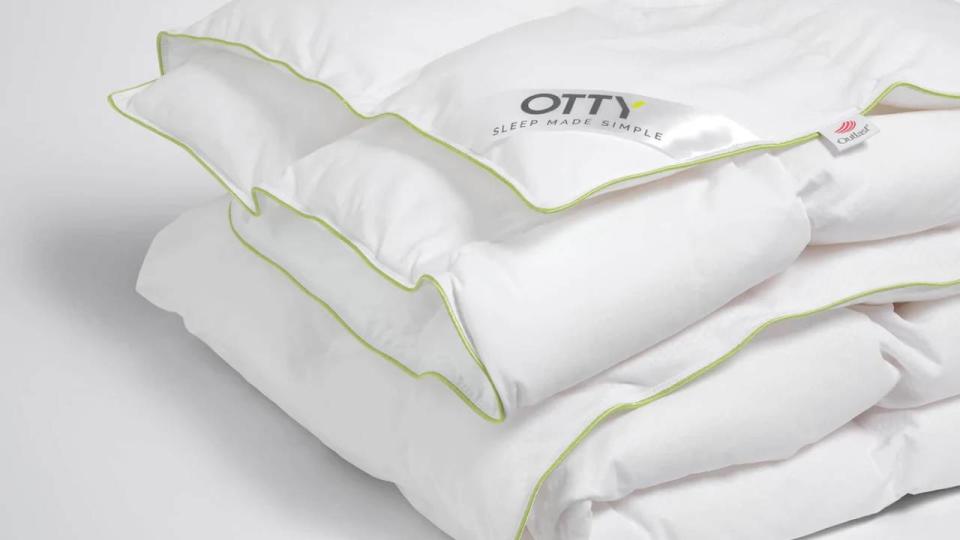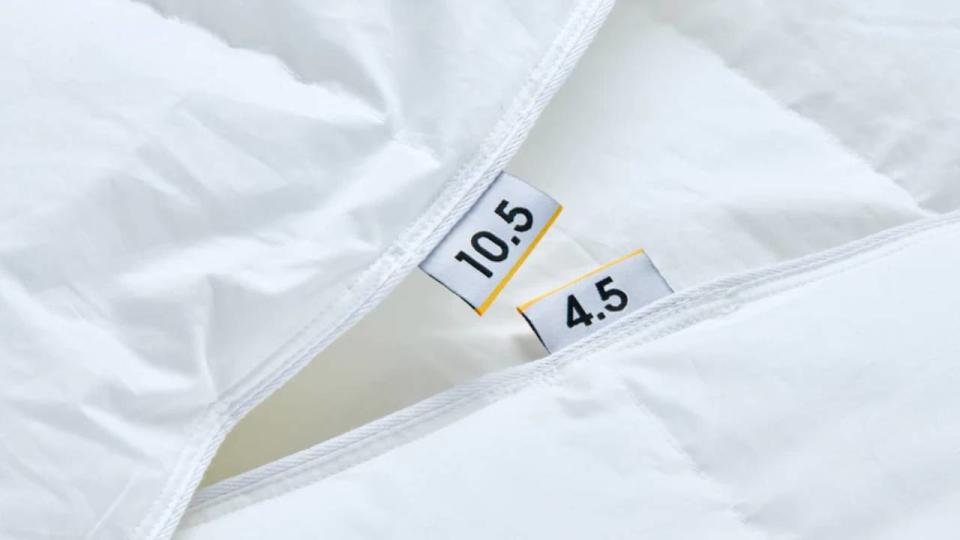Duvet size guide 2024: how to find the right duvet and tog for you

When it comes to getting a good night’s sleep, it’s important to invest in the right mattress, duvet and pillows. While many people spend a lot of time and money on the best mattress, they don’t always give their duvet the same attention.
Even if you’ve bought the best duvet for you, buying the wrong size has many disadvantages. But don’t be discouraged if this has happened to you. With so many options on the market, it’s incredibly easy to buy the wrong size, especially if you’re looking on a website that’s in a different country or currency.
Having a duvet that’s too big, too small or doesn’t fit properly inside the best sheets is not only a waste of money, but it affects your sleep. From being too hot or too cold, to not having enough to go round, to the fabric irritating your skin, these are just some of the reasons you need to get the right size duvet.
In this duvet size guide, I’ll take you through all the different duvet sizes from the UK, US and EU. I've also included advice on buying duvets, and how to understand tog and other important duvet features.
P.S. If you’re interested in finding the right mattress, check out our comprehensive mattress size guide and we also have a pillow size guide, too.
How to choose the right duvet size
If you’re shopping for a new duvet alongside a new mattress, the good news is you can just follow the size of the mattress. However, this doesn’t mean it’ll be the same exact size of the mattress, but rather it’ll be a little bigger to cover you properly.
To properly determine the duvet size you need, measure the size of your current mattress or the mattress you’re planning to buy. Make sure to focus on height, width and thickness, as thicker mattresses will be slightly wider than thinner ones, meaning you’ll need a longer duvet to cover it.
Once you have these measurements, you can compare this to standard duvet measurements to figure out which one you need for your mattress. It’s also worth considering your (and your partners) sleeping style. If you feel your current duvet is lacking in size, consider going a size up.

Below, I’ve listed the standard duvet measurements you’ll find on the market, including single, double, king and so on. These have also been separated into UK, US and EU sizes, and centimeter and inch measurements. Depending on the brand you’re buying from, many mattress companies will explain what duvet works best with their mattresses, and they often run bundle deals where you can get a full sleep set-up at discounted prices. See the best cheap mattress deals for monthly offers.
UK duvet sizes
Single: 135cm x 200cm / 53in x 79in
Small Double: 170cm x 220cm / 67in x 86in
Double: 200cm x 200cm / 79in x 79in
King: 225cm x 220cm / 89in x 87in
Super King: 260cm x 220cm / 102in x 87in
Emperor: 290cm x 235cm / 114in x 92in
US duvet sizes
Single/Twin: 50 x 201cm / 59in x 79in
Twin XL: 188cm x 249cm / 74in x 98in
Double/Full: 201cm x 201cm / 80in x 80in
Queen: 229cm x 224cm / 90in x 88in
King: 229cm x 259cm / 90in x 102in
California King: 239cm x 264cm / 94in x 104in
EU duvet sizes
Single: 160cm x 210cm / 62in x 82in
Double: 200cm x 200cm / 79in x 79in
King: 240cm x 220cm / 94in x 87in
Grand King: 260cm x 220cm / 102in x 87in

How to choose duvet material
There are many different duvet materials to pick from. The fabric you choose determines how well you sleep, how warm or cold you are, and how your skin or body reacts to it.
The two main duvet materials you have to choose from are natural or synthetic. Natural duvets have fillings like feathers, down, wool or silk and these are typically more breathable, durable and better suited to all seasons. Synthetic duvets typically use hollowfibre or microfibre fillings that are man made, hypoallergenic, vegan-friendly and cheaper than natural ones. See our guide on how to choose the right duvet filling for more information.
Duvet fillings will determine how light or heavy your duvet is. If you choose a down stuffed duvet, your duvet will be a lot lighter which provides good insulation, isn’t too oppressive on the body and making your bed is a lot easier. On the other hand, feather stuffed duvets are heavier due to the feather quills. Having a heavier duvet has its benefits, like keeping you warm during the colder months and making you feel more secure and comforted due to the weight. If you enjoy a heavy duvet but want something even heavier, many people switch to the best weighted blanket as a duvet replacement.
Choosing a filling that's kind to the skin is vital for people who suffer with allergies or skin conditions. No one wants a duvet that makes them sneeze so look for a duvet that’s hypoallergenic and antibacterial. We’ve got a full guide on how to choose the best duvet for allergies for in depth information. Regardless of whether you have allergies or not, it’s vital to keep your duvet and bedding fresh and clean to avoid any excess dirt, germs and bacteria getting on your skin and body, so follow these steps on how to clean your duvet.

How to choose duvet tog
Similar to picking the right weight or material of a duvet, it’s vital to choose a duvet with the right tog rating for you. Duvet tog rating measures how effective it insulates heats, meaning how warm your duvet is. Tog rating starts from 1-15. Duvets with a low tog rate don’t retain much heat but duvets with a higher tog will be warmer.
If you enjoy a thin duvet, the thinnest duvet on the market is around 4.5 tog. Thin duvets have their advantages like keeping you cool during the summer and they lie very lightly on your body. For something warmer, the thickest and heaviest duvet is around 13.5 tog and is best for winter and people who feel the chill.
While you can stick to the same duvet all year round, it’s recommended by sleep and bedding experts to switch your duvet during the transitional months of spring and autumn. This is to ensure you’re regulating your temperature through the seasons and getting the best night’s sleep all year round. See when to change to a warmer duvet for more details.

